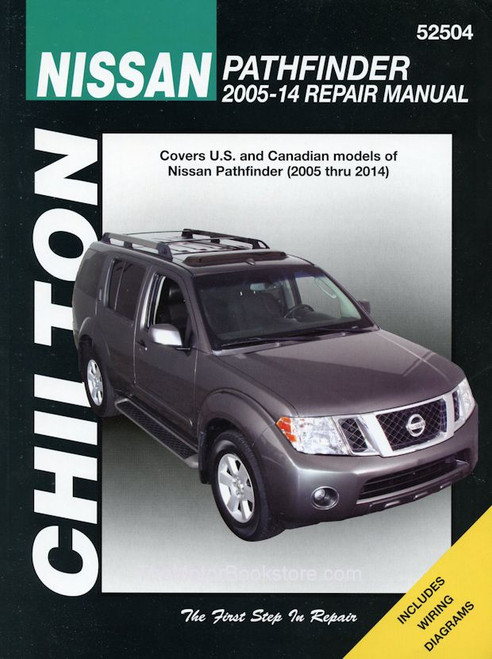The 2004-2014 Ford F150 Repair Manual by Chilton, covers U.S. and Canadian models of these pick-up trucks, available in standard and quad-cab body styles with short- and long-beds.
All trucks are available in two-wheel drive (2WD) and four-wheel drive (4WD) versions, and this manual covers both systems.
ENGINES:
- 3.5L V6 Turbocharged Eco-Boost
- 3.7L V6
- 4.2L V6
- 4.6L V8
- 5.0L V8
- 5.4L V8
- 6.2L V8
Note: Manual does not include information for F150 Heritage, Lightining, Raptor, F-250, Super Duty or diesel models.
Book Excerpt
ENGINE REMOVAL: METHODS AND PRECAUTIONS(Refer to illustration 6.1, 6.2, 6.3 and 6.4) If you've decided that an engine must be removed for overhaul or major repair work, several preliminary steps should be taken. Read all removal and installation procedures carefully prior to committing to this job. Locating a suitable place to work is extremely important. Adequate work space, along with storage space for the vehicle, will be needed. If a shop or garage isn't available, at the very least a flat, level, clean work surface made of concrete or asphalt is required. Cleaning the engine compartment and engine before beginning the removal procedure will help keep tools clean and organized (see illustrations 6.1 and 6.2). An engine hoist will also be necessary. Make sure the hoist is rated in excess of the combined weight of the engine and transmission. Safety is of primary importance, considering the potential hazards involved in removing the engine from the vehicle. If you're a novice at engine removal, get at least one helper. One person cannot easily do all the things you need to do to remove a big heavy engine and transmission assembly from the engine compartment. Also helpful is to seek advice and assistance from someone who's experienced in engine removal. Plan the operation ahead of time. Arrange for or obtain all of the tools and equipment you'll need prior to beginning the job (see illustrations 6.3 and 6.4). Some of the equipment necessary to perform engine removal and installation safely and with relative ease are (in addition to a vehicle hoist and an engine houist) a heavy duty floor jack (Preferably fitted with a transmission jack head adapter), complete sets of wrenches and sockets as described in the front of this manual, wooden blocks, plenty of rags and cleaning solvent for mopping up spilled oil, coolant and gasoline. Plan for the vehicle to be out of use for quite a while. A machine shop can do the work that is beyond the scope of the home mechanic. Machine shops often have a busy schedule, so before removing the engine, consult the shop for an estimate of how long it will take to rebuild or repair the components that may need work.
Chilton repair manuals can save you money on maintenance and repair bills. Step-by-step procedures and illustrations guide you through every job, from basic maintenance and troubleshooting, to complete teardown & rebuild.
Book Excerpt: Continued GENERAL INFORMATION
This Part of Chapter 2 is devoted to in-vehicle repair procedures for the 4.2L V6 engine. This engine design utilizes a cast-iron block with six cylinders arranged in a V-shape at a 90-degree angle between the two banks. The cylinder heads are also cast-iron and the block-mounted camshaft operates pushrods and rocker arms for valve actuation. The engine also features a balance shaft geared to the camshaft in the block. Information concerning engine removal and installation and engine overhaul can be found in Part C of this Chapter. The following repair procedures are based on the assumption that the engine is installed in the vehicle. If the engine has been removed from the vehicle and mounted on a stand, many of the steps outlined in this Part of Chapter 2 will not apply.
REPAIR OPERATIONS POSSIBLE WITH ENGINE IN THE VEHICLE
Many major repair operations can be accomplished without the removal of the engine from the vehicle. Clean the engine compartment and the exterior of the engine with some type of pressure washer before any work is done. It will make the job easier and help keep dirt out of the internal areas of the engine. It may help to remove the hood to improve access to the engine as repairs are preformed (refer to Chapter 11 if necessary). If vacuum, exhaust, oil or coolant leaks develop, indicating a need for a gasket or seal replacement, the repairs can generally be made with the engine still in the vehicle. The intake and exhaust manifold gaskets, timing cover gaskets, oil pan gaskets, crankshaft oil seals and cylinder head gaskets are all accessible with the engine in place.
Subject: Transportation: Pickup Trucks: 2004, 2005, 2006, 2007, 2008, 2009, 2010, 2011, 2012, 2013, 2014 Ford F-150 service, maintenance, repair. ISBN-10: 1620921251 | ISBN-13: 9781620921258 | Chilton 26668
TABLE of CONTENTS:
Introduction: About this manual | Introduction | Vehicle identification numbers | Maintenance techniques, tools and working facilities | Buying parts | Jacking and towing | Booster battery (jump) starting | Conversion factors | Automotive chemicals and lubricants | Safety first! | Troubleshooting
- Tune-up and routine maintenance
- 3.5L, 3.7L and 4.2L V6 engines
- 4.6L, 5.0L, 5.4L and 6.2L V8 engines
- General engine overhaul procedures
- Cooling, heating and air-conditioning systems
- Fuel and exhaust systems
- Engine electrical systems
- Emissions and engine control systems
- 5-speed manual transmission
- 4-speed automatic transmission
- 6-speed automatic transmission
- Borg-Warner transfer case
- Clutch and driveline
- Brakes - ABS
- Suspension and steering systems
- Body
- Chassis electrical system
- Wiring diagrams










